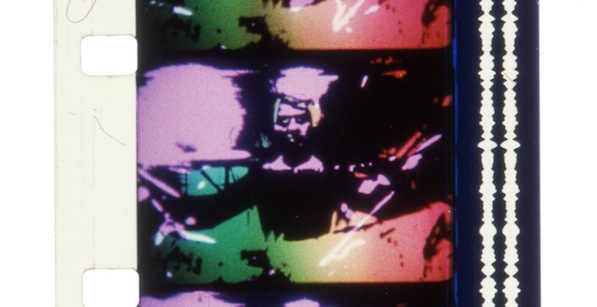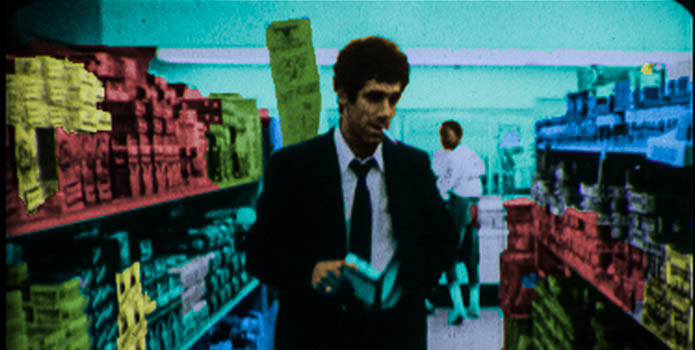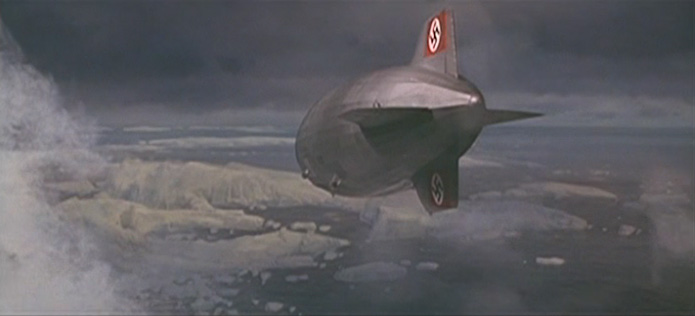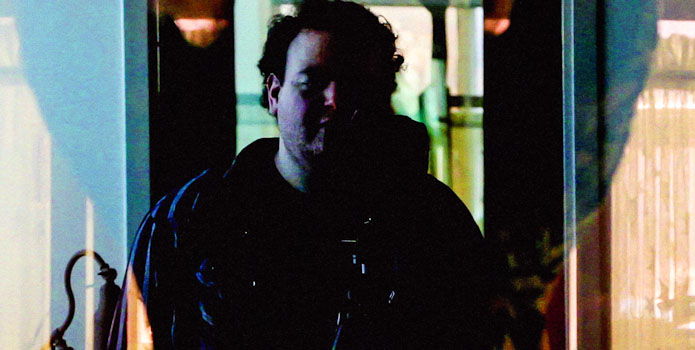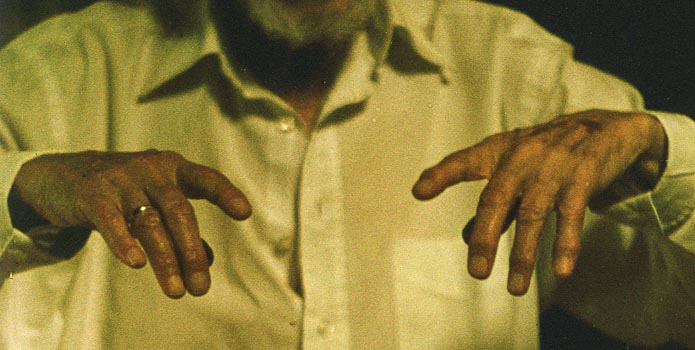During her introduction to the first of four evenings dedicated to short-form avant-garde works scheduled over the first weekend of the Toronto International Film Festival, programmer Andréa Picard described these intimate evening gatherings as “the heart and soul” of the annual Wavelengths program. The Wavelengths strand has expanded recently, folding in the section formerly known as Visions while scheduling medium length films in separately curated screenings right alongside the festival’s narrative features. Thus, as one gathers amongst just a couple hundred other cinephiles for these modest nocturnal affairs, it’s difficult not to sympathize with Picard’s assertion. The films comprising the Shorts program, while fated for mere festival praise and, best case scenario, museum and repertory screenings thereafter, consistently provide some of Toronto’s most visceral thrills and left-field surprises—and from some of the world’s most acclaimed filmmakers at that.
The first night of the 2013 Wavelengths Shorts program (“Variations”) set the bar high. Opening with David Rimmer’s Variations on a Cellophane Wrapper, from 1970—which, along with the restoration Lino Brocka’s 1975 film Manila In the Claws of Light, may be the (re)discovery of the festival—the first series of shorts was devoted to work which meditated on repetition and internal evolutions of the cinematic image. Comprised solely of a single looped frame of a female factory worker unraveling a sheet of cellophane, Rimmer’s film, newly restored, manipulates the image with an array of analogue effects, sending the original piece of found footage through negative processing before injecting color into the frame, all while the woman dutifully toils away at her task. The music meanwhile, develops from clattering beats to whinnying synthesizer patches. It was, in every sense, an appropriate table setter for the evening’s remaining highlights, which (excluding the director of El Adios Largos pulling an Andy Kaufmann in the post screening Q&A, a routine that got more people talking than his color coordinated retrofit of a Spanish dub of The Long Goodbye) ranged from Luther Price’s similarly manipulated Pop Takes, an A/V pillaging of a vintage television advertisement wherein a trio of men and women run directly at the camera, to the legendary Kenneth Anger’s unexpectedly humorous Airships, a trio (the first in 3D!) of found footage pieces observing German blimps as they slowly drift across cityscapes, the final and most famous of which, the Hindenburg, inevitably meets its fiery end.
As its title suggests, the second program, “Now & Then,” concerned itself with the psychological gap between the present and past and the nostalgia which we often utilize to bridge the two. The standout of the line-up, Naoko Tasaka’s Flower, however, seemed to have little to do with feelings of either the bygone or contemporary. Comprised of slow motion black and white images of waterfalls—sort of like an Ansel Adams painting creaking to life—interspersed with disorienting scratch animations, the film was the evening’s most tactile sensory experience despite not immediately disclosing its larger theme. On the other hand, Instants, by Hannes Schupback, and Constellations, by Helga Fanderl, engaged with recollection and reflection in straightforward fashion. The former, a series of still life images and sun-dappled shots of outdoor life, was the evening’s most serene; the latter, meanwhile, presents seven unrelated sequences of animals, nature, random industrial complexes and the like, and saturates the image until each becomes a kind of waking hallucination. A more blatantly disorienting effect was employed by Stephen Broomer in Pepper’s Ghost, which finds the filmmaker manually hanging colored transparencies in front of a stationary handheld camera while shooting the process through various panes of glass. It felt more au courant than anything else in the series.
The third shorts program was the most scattered in terms of quality but at the same time exhibited the widest breadth. The title film, Basma Alsharif’s Farther Than the Eye Can See, is one of the densest of the entire program, a kind of co-narrated journal about a family’s retreat from their home country of Egypt to Israel. The historical and personal detail is nearly impossible to process on a single pass, but Alsharif’s fluid camera movements and seamless overlays offer aesthetic pleasures to lighten the load. Sarah J. Christman’s Gowanus Canal, by contrast, is almost all aesthetic pleasure: pools of contaminated water sit as gas and oil swirl across their surfaces like watercolors, before Christman shows her hand a bit by revealing the source of such pollution. The source of the actual images on screen are the topic of Wojciech Bakowski’s Dry Sandpipe, an odd piece wherein the director explains via voiceover what we’re watching as said physical objects are obscured by animated drawings of geometric cylinders (or pipes). A couple of slighter works, Philipp Fleischmann’s investigation of interiors, Main Hall, and Nina Konnemann’s examination of exteriors, Bann, padded out the program, while Carlos Motta’s otherwise fascinating historical excavation of pre-modern Columbian sexuality barely seemed to fit the evening’s thematic bill.
This year’s final program, the cheekily titled “Elysium,” was, if not the most innovative of the four, perhaps the most rewarding. Nick Collins’ Trissakia 3, a visual document of a demolished church and paintings from the concurrent era, and Chris Kennedy’s Brimstone Line, a wooden frame-within-a-frame-within-a-frame experiment in perspective, as nice as they are, both felt like palette cleansers for the remaining three films. Robert Beavers’ Listening to the Space In My Room, follows an intuitive path around the director’s former home as an unidentified figure discordantly plays a cello, echoing the camera’s compulsive movements from object to object all around the house. Shambhavi Kaul’s Mount Song takes a similar interest in the architectural, only instead of in a personal context its constructed from an intriguing cinematic conceit, as the director edits together what appears to be a series of shots from an array of vintage Asian film sets. No actors populate these grounds; all that’s on view are the hyper-realized palaces and mist-shrouded gardens which surround the locales, each with enough character to make the absence of the human spirit negligible (Aaron Cutler spoke with Kaul about her work earlier this week for Keyframe). Finally, there was Tiane Doan na Champassak and Jean Dubrel’s invigorating ethnographic short, Naptwe, the Feast of the Spirits, in which the filmmakers excavated footage of the Burmese festival and let the rhythms of the rituals speak for itself. An onscreen prologue describes the event as “five days for the liberation of the bodies and minds,” which, excepting that extra day, is not an inaccurate description of the Wavelengths Shorts program itself.

